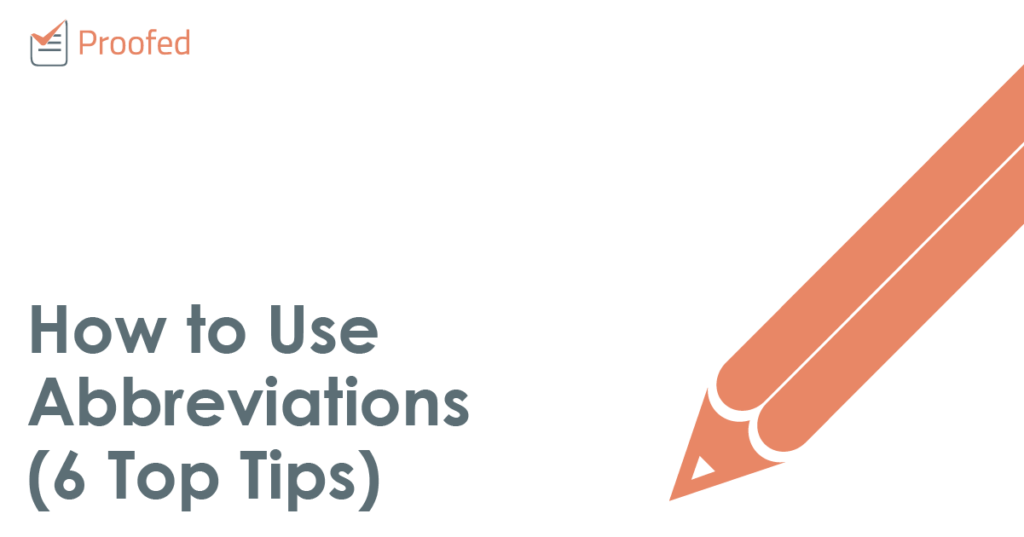Abbreviations can be tricky, so it’s important to use them correctly. That’s why we’ve created this list of top tips about using abbreviations in your written work!
1. When to Abbreviate
You don’t need to abbreviate every long word. It’s best to save abbreviations for terms you use repeatedly, especially long words or complicated phrases. Keep in mind that using too many abbreviations can make a document hard to read. This is known as ‘alphabet soup’.
2. Acronyms and Initialisms
We’ve discussed acronyms and initialisms previously elsewhere, but here’s a quick reminder:
- Acronyms and initialisms are abbreviations made up of the first letters in a phrase (e.g., CIA = Central Intelligence Agency; NBC = National Broadcasting Company)
- All acronyms and initialisms should be defined on their first use by giving the full terminology followed by the abbreviated version in brackets
- Once defined, the shortened version should be used in place of the full term
Stick to these basic rules and you should be fine!
3. Contractions
Contractions are created by combining two words. This usually involves omitting some letters, as indicated by an apostrophe:
Who will → Who’ll
Cannot → Can’t
I am → I’m
These words are common in many types of writing, but you shouldn’t use them in formal documents.
4. Latin Abbreviations
Quite a few common abbreviations are based on Latin terms. The most famous are:
E.g. (exempli gratia) = Used when giving an example
Find this useful?
Subscribe to our newsletter and get writing tips from our editors straight to your inbox.
I.e. (id est) = Used when explaining something
Etc. (et cetera) = Used to show that a list is incomplete
You’ll find even more Latin abbreviations in academic writing, especially when referencing sources.
5. Punctuation
When shortening a word, we usually add a period afterwards:
Mister → Mr.
Doctor → Dr.
September → Sept.
The main exceptions here are measurements, which are written without extra punctuation (e.g., “cm” for centimeter). The exception to this exception, however, is “in.,” which is short for “inches.” We add the extra period in this case so that the abbreviation isn’t confused for the word “in”.
With acronyms and initialisms, meanwhile, there’s usually no need to add periods between each letter. However, some people prefer to include periods, especially with “U.S.” and “U.S.A.”
6. Create a List of Abbreviations
Finally, you may want to create a list of abbreviations at the start of your document. You can use this to define any abbreviations you use, giving the reader an easy point of reference. A good tip is to make a list as you go, as then you don’t miss anything.
